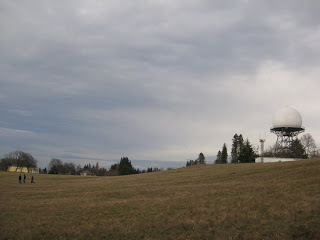Location: Magnolia
Address: 3801 W. Government Way
Acreage: 512.5
A working lighthouse, an Indian cultural center, military housing, a marine reserve. Twelve miles of hiking trails, a children’s play area, tennis courts, picnic tables. That’s not even to mention harbor seals, sea lions, coyotes and more than 250 species of birds. Even a well-concealed sewage treatment plant.
The biggest park in Seattle could take years to fully explore.
But that shouldn’t discourage the first-time visitor. Discovery Park has to be one of the best urban parks in the country. Just a few miles from downtown Seattle you can hike in a dense forest or walk across open grass fields to catch outstanding views of the Puget Sound and Olympics. The park’s long shoreline captivates kids for hours.
According to the city’s Web site, in 1898 Seattle gave the U.S. Army the land to create Fort Lawton. It was designed to hold thousands of soldiers and officers, but never ended up getting that much use during its early days. So, in the 1930s residents decided they wanted the land back. In a very generous gesture, the Army offered to sell the land back to the city for $1.
Now, somehow the city council didn’t see the opportunity in this, because they declined the offer citing questions about how to keep the land maintained. It then went on to be used more heavily during subsequent wars until the 1960s. For awhile it looked like it might become the site of an anti-ballistic missile base. That idea was abandoned, although a waste-water treatment plant was built.
Then, it looked like the city was going to have to pay $3 million to buy the land back to turn it into a park. Luckily a bill was passed, thanks to Senator Henry Jackson, to allow cities to get surplus federal lands back at no cost. Alas, after a bit of squabbling with the United Indians of All Tribes (who were ultimately allowed to lease 17 acres), the park was finally a reality in 1973.
Discovery Park is named after Captain Vancouver’s ship, the HMS Discovery, which explored the Puget Sound in the 1700s. You can read more about this park’s history at the city’s Web site.
Fort Lawton is still in use by the U.S. Army Reserves, and part of any visit to Discovery Park should be a look at the beautiful buildings that were constructed for housing and other fort activities.
There’s so much to do at Discovery Park, but the best way to explore is to take a map and set off on foot. Wander along the trails through the forest to wooden steps that lead down to the water. After checking out the historic West Point Lighthouse (currently under renovation to better preserve it) and playing on the beach, complete your loop by following the trail back up to a spectacular lookout point. A little further on the trail and you’ll end up in a wide open field of rolling hills and tall grass. Several placards explain the geology and ecology of Discovery Park.
A playground is located near the East Parking Lot, one of three main parking areas. This is a great place to start your visit if you have kids along.
The Parks Department offers dozens of environmental programs for all ages, including full moon walks, story telling, birding, toddler outings and nature camps.
So, if you’re aiming to see every part of Discovery Park, you better get started.
Some great links:
Archeology of West Point
Friends of Discovery Park
Daybreak Star Cultural Center
#88 (Visited 1/11/10)


[…] Seattle Parks, you know she’s visited ever single one of Seattle’s 426 parks, from vast Discovery Park – my own childhood playground – to the postage-stamp sized Lakeview Place. Her handy […]